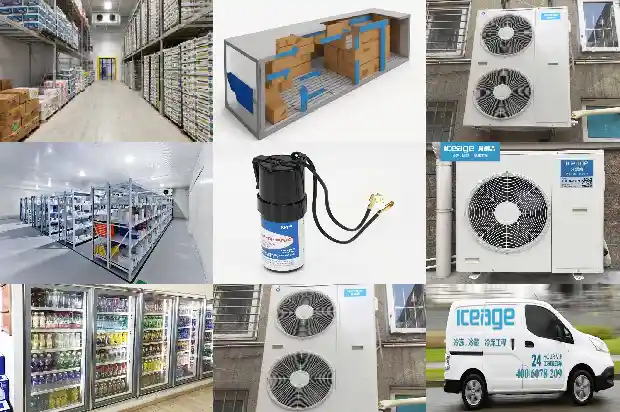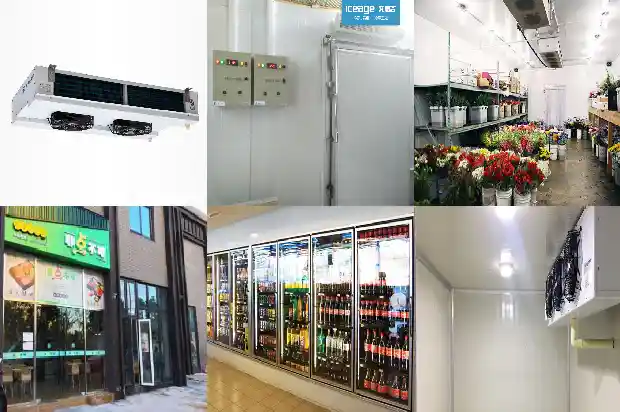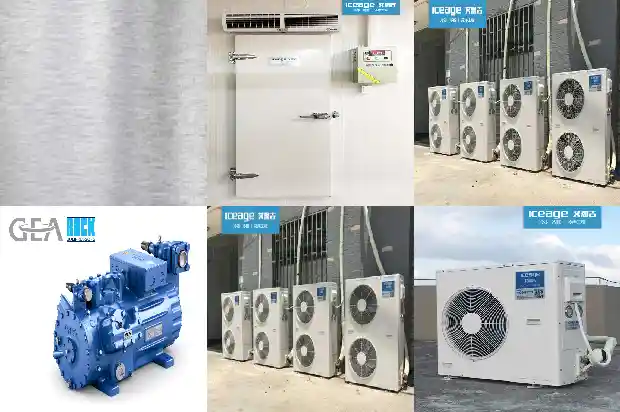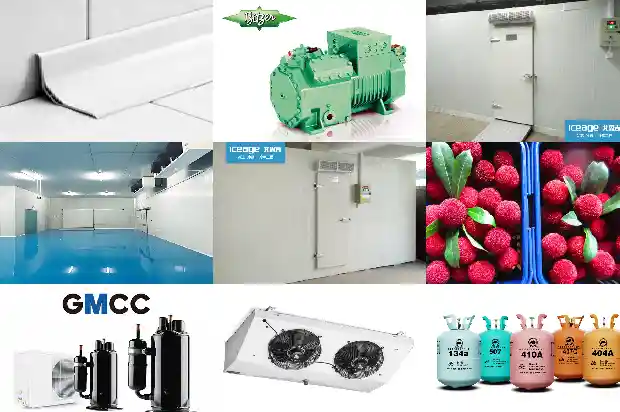Maintenance and Repair of Screw Type Cold Water Heaters
2024-09-17
Screw chiller is a kind of vapor compression refrigeration unit.

The screw chiller unit is generally used for about 3000 hours per year.

I. Maintenance of main components
(1) During operation, pay close attention to the exhaust and suction pressures of the system. If any abnormality is found, find the cause in time and troubleshoot.
(2) Do not adjust the set points of control and protection elements arbitrarily.
(3) Regularly check whether the electrical wiring is loose. If it is loose, tighten it in time.
(4) Regularly check the reliability of electrical components and replace failed or unreliable components in time.
(1) During operation, pay close attention to the exhaust and suction pressures of the system. If any abnormality is found, find the cause in time and troubleshoot.
(2) Do not adjust the set points of control and protection elements arbitrarily.
(3) Regularly check whether the electrical wiring is loose. If it is loose, tighten it in time.
(4) Regularly check the reliability of electrical components and replace failed or unreliable components in time.

II. Descaling
After long-term operation, the heat transfer surface on the water side of the shell-and-tube heat exchanger of the unit will deposit calcium oxide or other minerals. When there are many scales on the heat transfer surface, it will affect the heat transfer performance and lead to an increase in power consumption and an increase in exhaust pressure. Organic acids such as formic acid, citric acid, and acetic acid can be used for cleaning.
After long-term operation, the heat transfer surface on the water side of the shell-and-tube heat exchanger of the unit will deposit calcium oxide or other minerals. When there are many scales on the heat transfer surface, it will affect the heat transfer performance and lead to an increase in power consumption and an increase in exhaust pressure. Organic acids such as formic acid, citric acid, and acetic acid can be used for cleaning.
III. Start-up and shutdown
When shutting down in winter, clean the inner and outer surfaces of the unit and dry it; the drain valve must be opened to drain the water stored in the shell-and-tube heat exchanger to prevent freezing accidents.
When shutting down in winter, clean the inner and outer surfaces of the unit and dry it; the drain valve must be opened to drain the water stored in the shell-and-tube heat exchanger to prevent freezing accidents.
Start-up in spring
When starting the unit after a long shutdown, the following preparations should be made:
(1) Thoroughly inspect and clean the unit.
(2) Clean the water pipeline system.
(3) Check the water pump.
(4) Tighten all line connectors.
(5) Preheat the unit compressor as required.
When starting the unit after a long shutdown, the following preparations should be made:
(1) Thoroughly inspect and clean the unit.
(2) Clean the water pipeline system.
(3) Check the water pump.
(4) Tighten all line connectors.
(5) Preheat the unit compressor as required.
IV. Complete refrigerant leakage
If this happens, use high-pressure nitrogen (15-20 kilograms of air pressure) or refrigerant to detect leaks in the system. If welding is required, the gas in the system must be exhausted before welding. Before filling refrigerant, the entire refrigeration system must be dry and evacuated.
If this happens, use high-pressure nitrogen (15-20 kilograms of air pressure) or refrigerant to detect leaks in the system. If welding is required, the gas in the system must be exhausted before welding. Before filling refrigerant, the entire refrigeration system must be dry and evacuated.
Refilling refrigerant
(1) Connect the refrigerant filling bottle to the fluorine injection nozzle on the suction pipe of the compressor.
(2) Start the unit while circulating chilled/cooling water.
(3) Slowly fill the refrigerant into the system and check the suction and exhaust pressures.
(4) Note: When conducting leak detection and airtightness tests, never fill oxygen, acetylene, etc. into the refrigeration system.
(1) Connect the refrigerant filling bottle to the fluorine injection nozzle on the suction pipe of the compressor.
(2) Start the unit while circulating chilled/cooling water.
(3) Slowly fill the refrigerant into the system and check the suction and exhaust pressures.
(4) Note: When conducting leak detection and airtightness tests, never fill oxygen, acetylene, etc. into the refrigeration system.
V. System antifreeze
If serious icing occurs in the flow channel of the shell-and-tube heat exchanger, it may cause the shell-and-tube heat exchanger to rupture and leak. Frozen cracking damage is not covered by the warranty. Therefore, special attention should be paid to the antifreeze of the unit. When the unit is shut down for standby at a lower ambient temperature, if the unit is placed outdoors and the ambient temperature is lower than 0°C, the water in the evaporator and condenser must be drained completely. See the drain mark on the whole machine for the specific operation steps of draining water.
If serious icing occurs in the flow channel of the shell-and-tube heat exchanger, it may cause the shell-and-tube heat exchanger to rupture and leak. Frozen cracking damage is not covered by the warranty. Therefore, special attention should be paid to the antifreeze of the unit. When the unit is shut down for standby at a lower ambient temperature, if the unit is placed outdoors and the ambient temperature is lower than 0°C, the water in the evaporator and condenser must be drained completely. See the drain mark on the whole machine for the specific operation steps of draining water.
During operation, if the chilled water flow switch fails, it may cause the water pipe to freeze.

Related Articles
- Basic Faults and Preventive Maintenance of Water - cooled Units
- Essential for Maintenance! Parameters and Phenomena of Normal Operation of Refrigeration and Heating Systems
- Welding Equipment Used in Refrigeration System Maintenance
- Maintenance Methods for Small Modular Cold Storage Failures
- Maintenance Techniques for Air - conditioning Refrigeration Systems
- Maintenance Strategies for the Working Cycle and Electrical Automatic Control of Chillers
- Essential Basics for Maintenance, Debugging of Refrigeration and Air - conditioning Systems
- 8 Maintenance Procedures for Industrial Chillers
- Requirements and Maintenance for Building Meat Food Cold Storage
- Maintenance Methods for Faults in Screw Refrigeration Air - conditioner Compressors
- Maintenance Methods for Refrigerant Leak in Air - conditioner Outdoor Unit
- Knowledge, Installation and Maintenance of Cold Storage Systems
- Are you familiar with the detection and maintenance methods of air conditioner components?
- Maintenance and Operation of Freezing and Cold Storage Warehouses
- Water-cooled Screw Chiller: Operation and Maintenance
- Daily Maintenance Training for Users after Installation of Small and Medium-Sized Cold Storages
- Maintenance of Screw Chiller
- Maintenance of Screw Chiller
